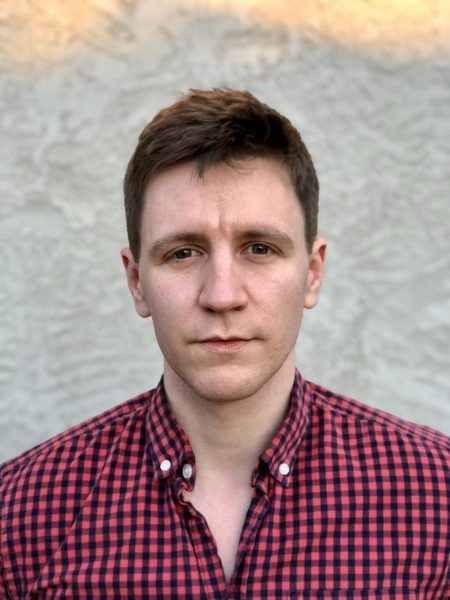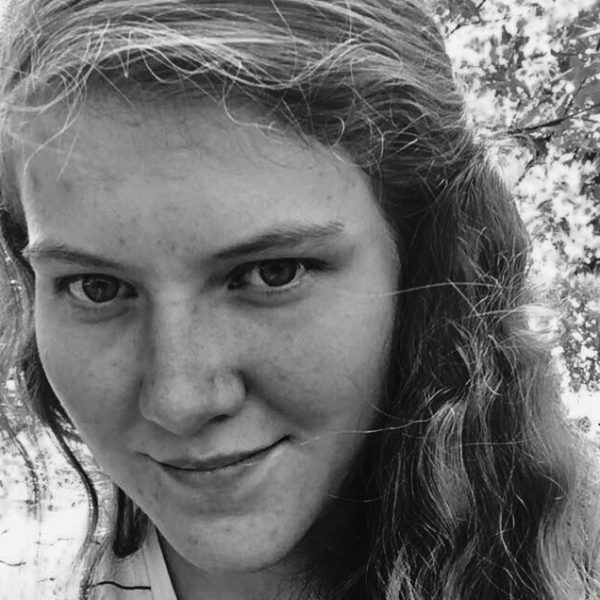In Conversation with Jonathan Gleason
Anna Emerson
 Jonathan Gleason is a writer, teacher, and medical interpreter who recently completed his MFA in creative writing at the University of Iowa. Gleason writes about illness, medicine, the body, and his manuscript “Field Guide to Falling Ill,” was shortlisted for the Graywolf Press Nonfiction Prize. His work has appeared in numerous publications, including The Sun Magazine, Kenyon Review, Michigan Quarterly Review, Fugue, and New England Review, among others.
Jonathan Gleason is a writer, teacher, and medical interpreter who recently completed his MFA in creative writing at the University of Iowa. Gleason writes about illness, medicine, the body, and his manuscript “Field Guide to Falling Ill,” was shortlisted for the Graywolf Press Nonfiction Prize. His work has appeared in numerous publications, including The Sun Magazine, Kenyon Review, Michigan Quarterly Review, Fugue, and New England Review, among others.
This month, editorial assistant Anna Emerson spoke with Jonathan Gleason about what draws him to an essay, how he contends with absence, and about his essay “Proxemics,” which appears in the Spring 2023 issue of Colorado Review.
Anna Emerson: I loved “Proxemics” and how it weaved so many different threads together—threads of architectural history, the prison system, the concept of proxemics, and the personal—and does this weaving so deftly. Each strand feels both meaningfully entangled and also holds space for distance. I was wondering how you see the act of essaying as collapsing, bending, or performing distance? How does essaying complicate the amount of space we keep between ourselves and others?
Jonathan Gleason: Interesting question. To answer that I’d start by thinking about the distance you create in yourself. Whenever I’m writing nonfiction, which is what I usually write, there’s the “I” that is the thinking person on the page, the narrator, who is doing some of the connecting and untangling and moving through these different histories. And then there’s usually another “I,” who is more of an actor in the scenes, who’s moving around and embodied in the space, who is having these personal relationships. In this essay, I think that first “I” is a lot more dominant. There was a version of this essay where I was a bit more present, but I think that “I” was obscuring the relationship between the siblings—my father and his brother. But those two “I”s are still always there, and to write an essay involves putting distance between one aspect of yourself and another. In this essay, I think one of the emotional dynamics here follows my not liking a member of my family that much and yet trying to move myself into a space where I can still argue for his best interests. If you’re too emotionally close to that person, you might be too blinded by any number of feelings to correctly assess the situation.
AE: I think that’s a smart way of putting it. There are multiple selves in an essay at any given point. And I also loved what you said about giving yourself that distance in order to write about a family member. Could speak a bit more about how you, in general, approach writing about family?
JG: Family is something that I keep coming back to, although not something I necessarily intend to write about when I’m beginning each essay. I’ve written a lot about medicine and illness before, and it might be surprising to know that this essay started as an attempt to grapple with what the COVID pandemic would mean. It’s become something completely different. When I go to write about family, it usually comes out of an organic space; I have that material and those scenes. I write them down, often not knowing what they’re going to become and move forward from there. One of the challenges, though, is getting away from sentimentality, from those familiar narratives that might replicate what we expect to hear. In this case, I wanted to tell a story of redemption for a family member but one that didn’t turn him into an innocent or sentimental figure.
AE: I love this idea that you’re always accumulating—taking something you’re thinking about in the moment, writing it down, and turning it into the building blocks of an essay. What does this process of creation look like for you?
JG: I’ve been thinking about this a lot lately because I’m also a teacher. I was teaching creative writing at Iowa, and I’ve been thinking about revision a lot recently. One of the most important parts of my process is revision. I feel like each essay that ends up being successful has to pass through at least one major revision that totally reimagines what it is. This piece was a very narrative-forward essay; the embodied “I” was a bigger part of it. It was a little bit messy and had this one character, at the center, who was absent. The architecture and philosophy was always there, but it took me kind of bulldozing the original piece and rearranging the pieces that led to this form. For me, switching modes (narrative to lyric or vice versa) is often part of the process. It seems like the frustration and the working through and the revising is essential to the process.
AE: I’m also curious about what initially draws you to a topic and what your research process looks like?
JG: I feel like the thing that first excites me and gets me to work on an essay is usually some idea or piece of history. For this piece I think it was that prisons—or penitentiaries—were supposed to be a merciful change from other forms of punishment. I suppose it wasn’t this information that interested me, but the friction between what we know of prisons now versus how they were imagined then, how something could start with such good intentions and end so badly.
I’m often looking for contradictions or unexpected turns in history. Hypocrisies and paradoxes are things that grab my attention. To write the essay, it’s usually not enough to point to something and say: “How interesting” or “How unexpected.” You have to investigate it and narrativize, and I also think you have to connect it to some sort of human element, whether that be a narrative or vignettes that attach the ideas to their real human impact. Once I’ve landed on an idea and done some research into the history, I worry that I don’t have the experiences to connect it back to anything relevant to me. But eventually those experiences come. It took me a while to realize that I’ve seen Eastern State. Once you think about a topic enough, things start to float to the surface and you start making these sorts of horizontal connections between prisons and architectural history, proxemics, Edward T. Hall. I like to remind my students that they have a wealth of latent knowledge inside of them, and sometimes it’s about being patient enough to let it come to you.
AE: I love what you say about patience and not rushing the connections in an essay. A little earlier, you spoke about writing with and around the absent figure of your uncle, and I’m curious to know more about how you contend with absence in an essay? Does the “lyric mode” give you the space to work with absence?
JG: Absolutely. Absence is maybe an emerging theme that I like to contend with. Not to put too fine a point on it, but I do find that essays that deal with absence do tend to have a more lyric form, but also, more literally, white spaces or gaps. In this essay, I think this comes from moving horizontally through a bunch of fields—connections that are a bit more associative rather than strictly logical. But also, it comes from stitching things together. I’m writing about another person and they’re not here with me, so I have to make certain leaps. Otherwise I would risk filling in gaps that I cannot ethically fill in. For as much as I do know—from my uncle’s letters—when you go to write, you realize how little you actually know. I think the lyrical mode (for lack of a better term) is a really good mode for making space for that kind of uncertainty, acknowledging to a reader, even implicitly, that there is more to be filled in here, but you can draw your own conclusions.
AE: Finally, I wanted to ask you: what’s next? Where do you hope 2023 is going to take you as a writer?
JG: It’s a year of big changes—in writing and writing associated areas. I feel like my essays always come in pairs so I’m editing another essay for another publication. In some ways these essays are like paternal twins. Those are the two most pressing things I’m working on. I decided last year to make the jump and leave my teaching post at Iowa. I’m looking around at other teaching opportunities, moving to Chicago, and working right now with the generous support of the Elizabeth George Foundation, thinking about future book projects. I’m putting together a proposal for a book about medicine and illness, possibly focused specifically on HIV, which might not seem to have a lot to do with this essay, but I think if you look at my other work, you’ll see a similar appreciation for deep history, making connections between things that happened a long time ago—things that feel very solid and decided—how they still have this resonant hold on us today.
See more from Jonathan Gleason at his website.
 Anna Emerson (she/her) is an editorial assistant for Colorado Review and the Center for Literary Publishing as well as a second-year MFA candidate in creative nonfiction at Colorado State University.
Anna Emerson (she/her) is an editorial assistant for Colorado Review and the Center for Literary Publishing as well as a second-year MFA candidate in creative nonfiction at Colorado State University.